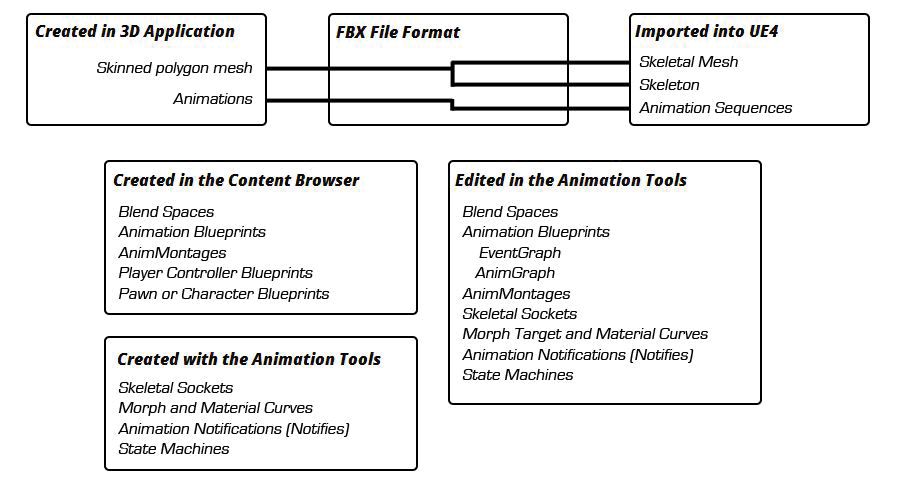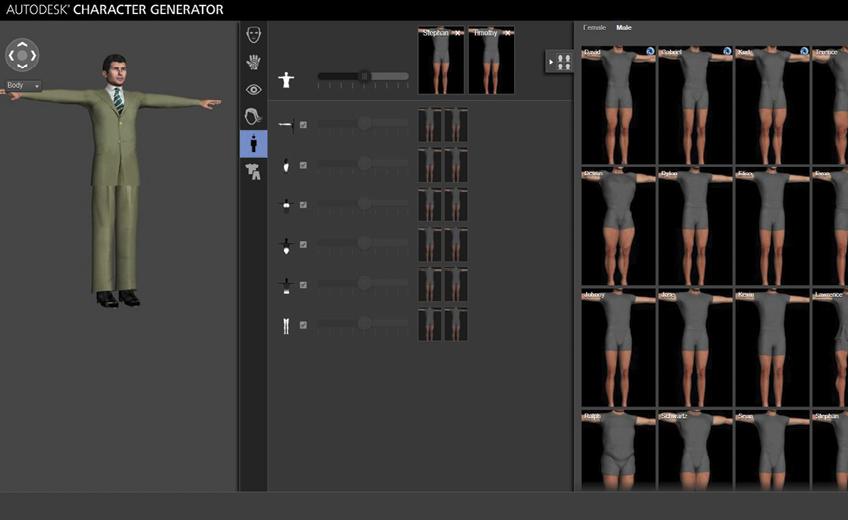183
Tool Creation |Human Agents
182
Tool Creation |Human Agents
Character Model and Animation
Beyond the additional consideration of AgentStates, we must also consider the physical form of these agents, or rather a virtual description of their physical form. To do so, additional assets will be required to define how these agents look as they are moving throughout the environment. This can be broken down into skeletal assets and animation assets within UE4.
Skeleton Assets
Skeleton assets within UE4 are comprised of the skeletal mesh and the skeleton. This can be described as a set of “meshes bound to a hierarchical skeleton of bones which can be animated for the purpose of deforming the mesh.”[13] Put simply, the surface of the skeletal mesh asset is responsible for the visual representation of the agent, whereas the skeleton asset is responsible for translating animation data to this surface mesh. (Fig. 3.3.40)
These assets can be obtained in many ways. UE4 comes with a ready-to-use solution in the form of a generic humanoid robot model (Fig. 3.3.43); however, they can also be created within external applications such as 3ds Max and Maya or be purchased and downloaded through various asset stores such as Unreal Marketplace[14] and CGTrader[15].
Of these external applications, one tool that may be worth investigating further is Autodesk’s web-based character generator.[16] (Fig. 3.3.41) This tool allows us to generate a variety of generic character models based on their height, gender, facial and body features, and clothing. With this, we can quickly export a variety of model assets and create a library of people to spawn within the simulation space. While these models are not particularly detailed, they are perfectly suited to blend into a simulated human crowd where the agents are meant to represent normal everyday people. From here, we can then import these models as an FBX file and implement them within the character asset.[17]
One thing to keep in mind with these models, however, is the hardware limitations present within a multiagent simulation system, where higher model detail will increase rendering time and slow down the performance of the overall visualization. For this reason, I have decided to stay with UE4’s default robot model to prioritize performance, with the intention of utilizing more detailed model assets in the future. Once we have access to faster hardware and a more optimized simulation code, it may become possible to utilize these more detailed model assets in not only final rendering outputs, but in the design phase as well.

UE4 animation system breakdown
From “Animation System Overview,” Unreal Engine Documentation, accessed December 28, 2019, https://docs.unrealengine.com/en-US/Engine/Animation/Overview/index.html.

Autodesk Character Generator
Screen-captured by Author, from “Autodesk Character Generator,” accessed December 28, 2019, https://charactergenerator.autodesk.com/.